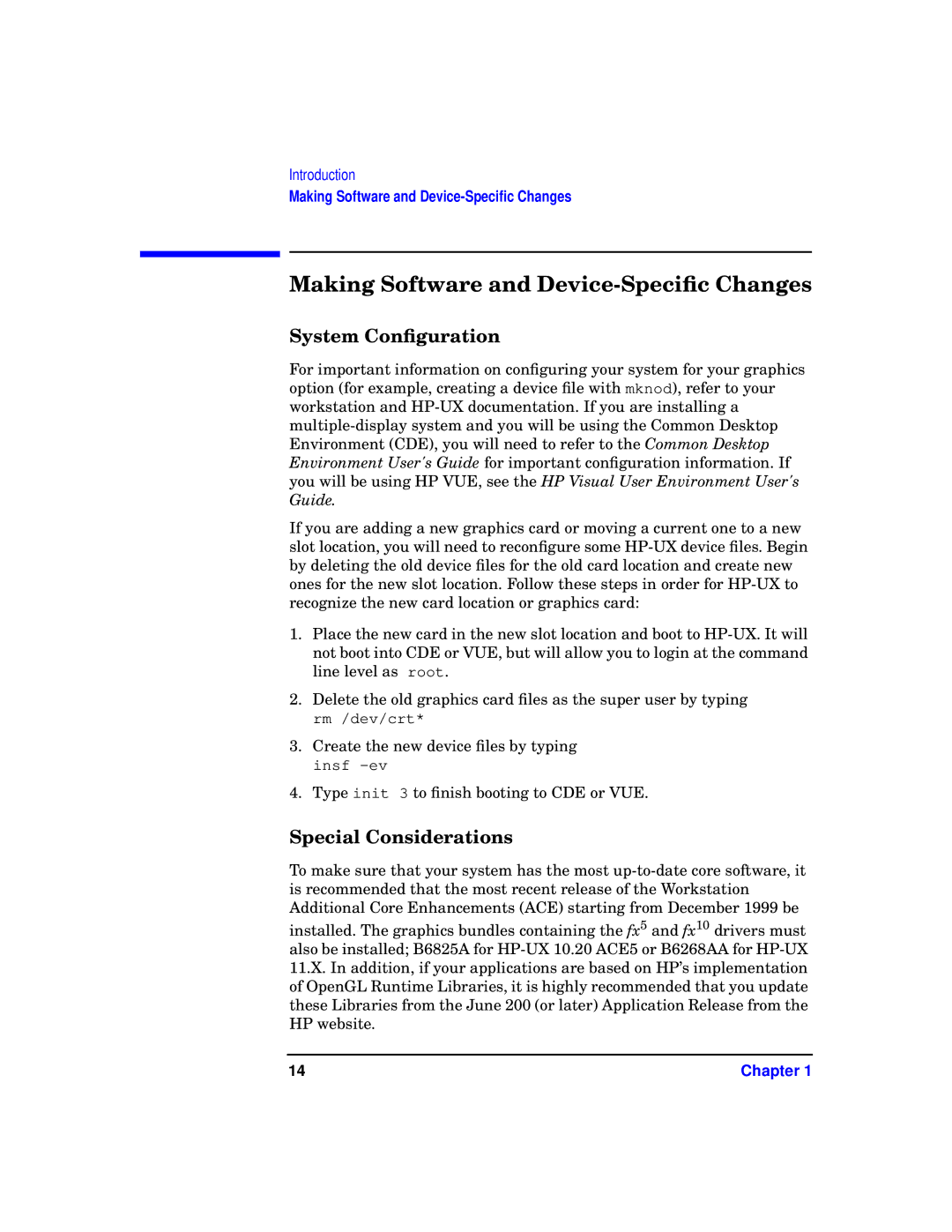VISUALIZE fxe, fx5 and fx10 Graphics Family E0601 specifications
The HP VISUALIZE fxe, fx5, and fx10 Graphics Family E0601 represents a significant leap in graphics technology, designed specifically for high-performance computing environments. Tailored to meet the demanding needs of engineering, medical imaging, and advanced graphics applications, this series focuses on delivering exceptional visualization capabilities coupled with robust performance.One of the main features of the HP VISUALIZE graphics family is its outstanding rendering power. The fxe, fx5, and fx10 models utilize advanced graphics processing units (GPUs) that support enhanced rendering techniques. These GPUs leverage a combination of hardware and software optimizations to accelerate complex visual simulations and 3D modeling, ensuring smooth and fast results in even the most resource-intensive applications.
In terms of display capabilities, the E0601 series excels with support for multiple high-resolution monitors. Each of these models can drive multiple displays simultaneously, providing users with expansive workspace and improved productivity. This multi-display functionality allows for a comprehensive view of complex datasets and graphics, making it ideal for visualizing simulations, CAD models, and other detailed graphical representations.
Another key characteristic is the integrated support for advanced shading and texturing technologies. The HP VISUALIZE graphics family incorporates hardware-accelerated texture mapping, which enhances the realism of 3D renders. This makes it particularly suited for fields such as computer-aided design and digital content creation, where lifelike textures and details are essential for achieving professional quality results.
Moreover, the E0601 graphics family emphasizes compatibility with a wide range of software applications. The drivers for these graphics cards are optimized for popular graphics-intensive applications, ensuring reliable and efficient performance across various platforms. Whether in a UNIX environment or running Windows, users can expect seamless integration and stability, facilitating a smooth workflow.
Thermal management is also a priority for the HP VISUALIZE graphics family. The fxe, fx5, and fx10 are designed with efficient cooling solutions that help maintain optimal performance even under heavy workloads. This ensures longevity and reduces the likelihood of thermal throttling, which can hinder performance in more demanding tasks.
In conclusion, the HP VISUALIZE fxe, fx5, and fx10 Graphics Family E0601 stands out for its impressive performance specifications, support for multiple monitors, and advanced rendering technologies. It remains a critical tool for professionals requiring high-quality visualization and rendering capabilities, making it an essential asset in the realms of engineering, design, and advanced computing.

